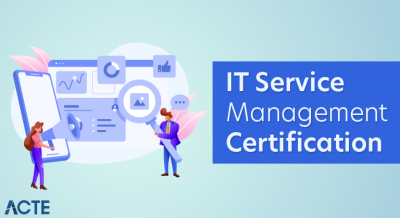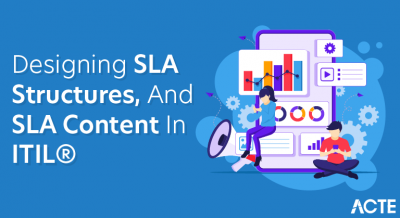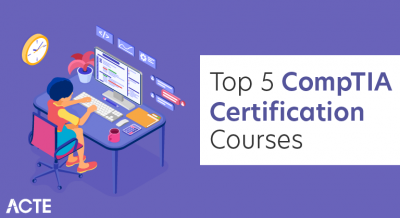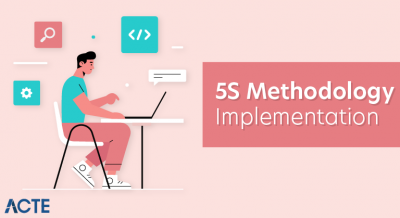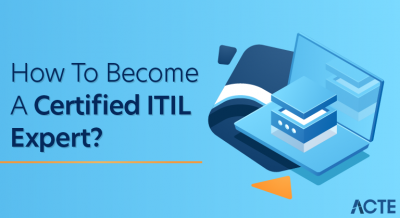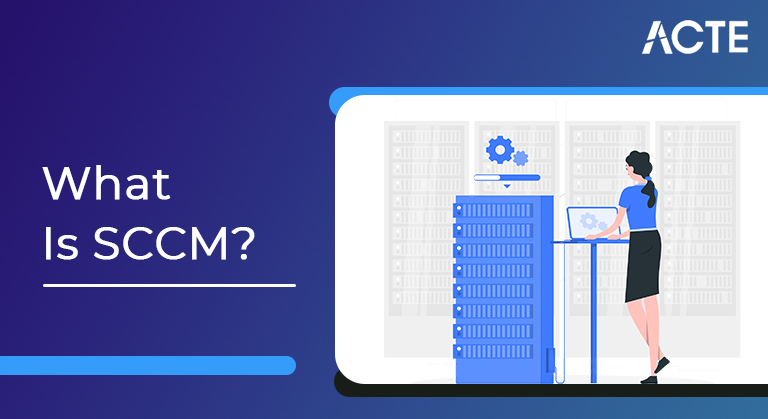
The Microsoft System Center Configuration Manager is an administration tool that enables organizations to manage and safeguard devices and software within its environment. SCCM takes care of the hardware inventory, distributing software and patches, and more.
- Introduction to SCCM
- Who can use it and how much does it cost?
- Core features of Microsoft SCCM
- SCCM Application Management Basics
- Who will support it?
- How does it works
- What is the use of SCCM?
- Microsoft has Renamed (SCCM) to (MECM)
- Benefits of SCCM
- Conclusion
Introduction to SCCM:
Microsoft System Center Configuration Manager (SCCM) provides an entire tool for written language, configuration management. permits organisations to deliver the correct applications, applications, and updates to Windows users quickly and inexpensively.
Many Windows users are already mistreating machine-driven tools like Windows Update to stay their systems up to presently. SCCM permits professionals to make bound that the entire Windows seven / visual image / XP system running on their network remains up to presently.
This protects every microcomputer from being exploited by writing vulnerabilities and improves network security across the sphere.
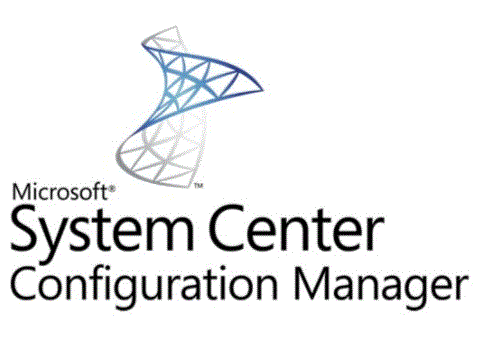
- Because the University of Kansas contains a Microsoft field Agreement, any party at Rf will use SCCM to manage their computers. However, for that to happen, the Department’s Technical Communications are going to be needed to complete our SCCM listing, and go with the foundations contained in this. This typically means dynamical configuration settings on division computers and attending coaching hosted by Rf info Technology. Please contact your Technical Liaison at Rf IT for additional info.
- If your Windows laptop is during a cluster “managed” within the Rf Active Directory network, it will be put in in SCCM updates. you’ll be able to see if your system is during a managed cluster by observing the panel (use “Start”> “Control Panel”) to seek out the “Configuration Manager” icon.
- If no such icon seems, your Windows system is going to be “unsupported” and you may have to customise it yourself. For directions and data on that method, click here.
- KU IT cannot offer SCCM service to Windows in operating systems outside the establishment, or to those mistreatment Windows ninety five, 98, 2000, and NT. If you’re employing a laptop with those in operation systems, we have a tendency to urge you to upgrade to Windows XP a minimum of.
- We are unable to produce this service to Linux computers or Macintosh computers. Mackintosh users will click here for info regarding facultative auto-update.
Who can use it and how much does it cost?
Core features of Microsoft SCCM:
Some key options in Microsoft System Configuration Manager include:
Windows Management – compatible with updates to Windows ten.
Repository protection – to produce for the identification and protection of malware.
Reporting – introducing user data, hardware, software, applications and package updates.
Operating system preparation (OS) – deploying operating systems on business devices.
Software update management – permitting user managers to deliver and manage updates to devices across the corporate.
App delivery – that permits directors to deliver the application to any or all devices across the business.
Health observation – that displays shopper and health functions within the console, and which can alert users if health statistics drop below a definite level.
A few key options of the System Centre Configuration Authority facilitate managers to handle the delivery of your own-device (BYOD) to business organisations, together with user-focused management. finished users will look for applications through the help package centre and specify the days once the installation and upgrade takes place. IT directors will install applications on totally different devices. For instance, SCCM will be wont to install a conventional application on a main device, like the Remote Desktop App, or as an associate degree App-V application on a tablet. SCCM additionally incorporates role-based access management (RBAC), which reinforces system security by displaying solely the last users of the communication components operational within their specific fields as outlined in the Active Directory.
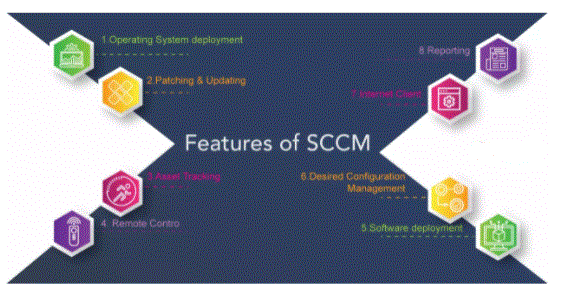
SCCM Application Management Basics:
Application – An application contains one or more sets of installation files and instructions on how to use the software. Apps are sitting on top of the software software because they cannot operate without the operating system and system resources.
Application Delivery Type – If an application is available to you, it requires at least one type of feed, as it determines how to install the application. With SCCM, you can use more than one post type to configure different content and input of the same application. We will see the types of applications in the next section.
Requirements – When planning to use applications, you can specify requirements to ensure that you are directing the application to the correct devices. For example, your organisation contains a combination of Windows 7 and Windows 10 OS. The app you want to use is only compatible with Windows 10 OS. So using the requirements, you can specify the app installation to happen only in Windows 10 OS. Configuration Manager verifies these requirements on devices before installing the feed type.
Global Conditions – Global Conditions is a library of predefined needs that you can use with any application and type of feed. Configuration Manager includes a set of internationally built settings, or you can create your own.
Fixed Post – In the Configuration Manager, when you create an application, you can make a custom copy. Implemented submission examines the requirements, method of acquisition, and dependence of the application. Client reports results without installing the app. Check out this post where I compiled about matching usage.
Post Action and Purpose – Feed action to install or uninstall an application. You must specify whether you want to install the program or uninstall it. In addition there is a purpose for the post. The purpose for use may be Available or Required.
How to Find – By using the diagnostic methods you can find out if the device has installed the app. If the detection method indicates that the application has been installed, the Wizard Manager will not attempt to install it again.
Supersedence – By using Supersedence, you develop or modify existing applications through a Supersedence relationship. If you have the latest version of the app, you specify a new feed type that will replace the replaced version of the application feed.
Dependency – Dependence refers to one or more types of feeds from another application that the client must install before installing this type of feed.
- The central service will be supported by KU IT, as well as a list of default applications and software updates.
- However, monitoring and implementing such applications, as well as creating, managing, and evaluating any specific departmental applications, will be the responsibility of the Department of Technology Coordination.
- KU IT is happy to train Technical Liaison and to assist with any of the basic problems SCCM may encounter.
Who will support it?
How does it works:
Packages are built into the SCCM console containing usable files and command lines for the program to be installed. These packages are then repeated in “Distribution Points”. Distribution points are empty except for the File Servers type used to store package contents somewhere. Therefore, if a large number of devices are located remotely then they can download the application to the distribution point, instead of connecting all the way to the SCCM Main Server.
All machines in the SCCM area will be fitted with an SCCM Client agent, which assists the machine to communicate with SCCM servers. The referral is therefore created by the SCCM administrator where the application is directed to a number of machines. With the help of the SCCM client agent installed on the end user’s machine, it keeps track of new policies or submissions. Once the policy has reached its final destination, it will be evaluated and will have access to its appropriate regional distribution point to download Package Content.
Once usable files downloaded to a temporary folder (C: \ Windows \ ccmcache) are installed and the same status is restored to the SCCM server for updating on the website. This is a very short set of steps and there are many other things involved in the background. And not all infrastructure is the same so in some of them, there may be many additional steps to be taken. But the main components used in the Software Distribution Program (Packages / Applications, Programs, Distribution Points, Client Machine) will remain the same.
What is the use of SCCM?
One Client: The ConfigMgr shopper that controls all pc installations, each software package updates and applications installation. No additional “Other installations already created errors”. Once ConfigMgr instals a software package update on shopper c software package distribution is paused to avoid these things. Once exploited, WSUS non-public ConfigMgr shopper and also the WSUS shopper usually attempt to install software package updates at the same time, leading to serious error for each of the top users and also the IT department. however i feel it’s one of the most vital of all.
Reporting: There are several integral reports of Compliance software package Reviews, troubleshooting and details. Integrated reports and every one alternative info that ConfigMgr has concerning your customers in your space will simply produce the actually powerful and customised reports you wish in your space.
Integrated Management / One Console to Rule All: If you utilise Configuration Manager 2012 for software package updates and every one alternative options in Configuration Manager 2012 like Application Management, OSD, Settings Management, inventory and currently and end Protection you’ll have the console one management. of your nature.
Windows Maintenance: Windows maintenance is often accustomed to management once changes are allowed to be created to a particular system. This implies you uninstall the update once and support Maintenance Windows updates at put in and servers are restarted counting on usage. additional info concerning Windows Maintenance.
Editing: In Configuration Manager 2012 we’ve heaps of choices accessible once it involves written material associate update and desegregation with Maid Windows, it’s extremely powerful.
One Infrastructure: the particular software package update files are downloaded to the native stateless person and not the WSUS / SUP server. This implies you would not like a separate WSUS infrastructure and updates are downloaded to stateless people that reduces the impact of WAN on remote sites.
Rules for automatic use: this can be not extremely profitable compared to WSUS, however because it could be a new feature of Configuration Manager 2012 i will be able to add it to the list. it’s doable to mechanically authorise updates, transfer them and distribute them to DP’s mechanically, as you’d in WSUS. extra info
System Centre Update Publisher: you’ll be able to use System Centre Update Publisher to transfer a merchandiser catalogue with updates like Adobe, HP, and holler and publish your updates to WSUS dB and use them as updates in Configuration Manager 2012. additional info.
OS feed integration: The integral performance is offered and may be accustomed to run software package updates within the Configuration Manager throughout OS deployments.
End User Experience: The software package centre is employed for all user interactions, conversations that are flaunted to the user all have identical look, creating it easier for the top user to know what’s happening.
Direction: Through question-based collections we have a tendency to get extremely powerful targeting choices. We are able to produce a group supporting any variety accessible on the location, as an example, categorise all purchasers who supported the last variety in a very pc name, and issue software package updates to PCs with one common computer sooner or later and every one with identical variety successive days. Distribute the load and risk mechanically.
Offline Image Interaction: If you’re exploitation ConfigMgr 2012 to manage your software package Updates you’ll be able to use the integral feature to make associate offline service on your OS pictures, which implies you’ll be able to install OS-related software package Updates while not resizing the image. . this may scale back the quantity of times you’ve got to build the image.
- Microsoft has renamed System Centre Configuration Manager (SCCM) to Microsoft endpoint Configuration Manager (MECM).
- What is Microsoft endpoint Configuration Manager (MECM)?
- Microsoft has integrated the Configuration Manager and Intune laptop management with straightforward licences. This permits the implementation of a seamless, end-to-end management resolution that integrates the practicality, data, and innovative innovations of Microsoft Intune and Microsoft System Configuration Manager (SCCM). MECM provides progressive management and security that meets customers’ whereabouts and helps them get to the clouds. Microsoft has also enclosed varied management solutions which will be enclosed within the Microsoft endpoint Manager stigmatisation.
- Cloud-enabled intelligence with management solutions like Intune and Desktop Analytics
- Made for Microsoft 365 stack – Manage devices with integrated and advanced resolution with cloud-based security controls.
- Fully integrated security and possession – Use Conditional Access via Intune to manage devices and applications which will be coupled to your email and company services.
- Almost all devices and applications
Microsoft has Renamed (SCCM) to (MECM):
Microsoft endpoint Manager integrates varied device management solutions. the subsequent Microsoft management solutions are currently a part of the Microsoft endpoint Manager Brand:
Intune: A cloud-based business management business management. MECM permits organisations to manage PCs with Intune shopper code. If you’re the owner of Intune, you’re currently the owner of SCCM once more. Please note, if you own SCCM, then you may get laptop management at Intune – however not mobile management. Intune empowers organisations to supply a secure delivery-to-your (BYOD) device or personal device system to all or any workers.
Autopilot: A cloud-based technology accustomed came upon and pre-configure new devices inside a corporation while not having to manoeuvre the laptop to use the informatics readying 1st.
Desktop Statistics: Provides data and knowledge to create hip choices regarding readiness for your Windows client update. It combines information from your organisation with collective information from immeasurable devices connected to Microsoft Cloud services. This is often helpful for predicting potential issues and suggests attainable mitigation.
Program Management: this permits Microsoft Edge to mechanically update the shopper version on the tip user’s device.
Client Management: Install custom configuration bases as a part of compliance policy testing. Also, change Windows ten user policy for multiple business sessions (multiple interactive sessions).
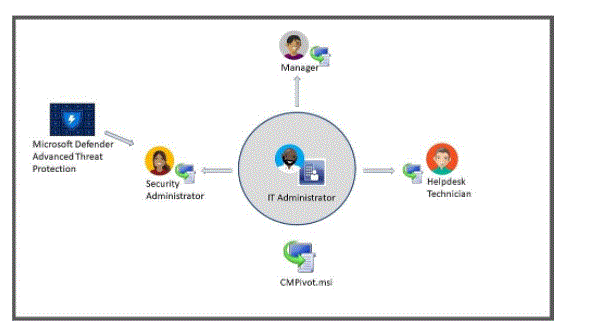
- Installation of software without a visit means you do not have to wait for an expert to appear before you get a new system.
- Licensing monitoring lets you know how many product licences you are using, allowing you to save money by reinstalling unused software.
- Active System Delivery and User Region Transfer allows you to re-install and restore user profiles quickly and easily.
- In-depth management and training of KU IT means you do not need to hire a specialist to keep the system running.
- Automatic inventory reporting and monitoring allow your technical staff to identify any machine in the network without taking inventory in person.
- Integrated security compliance management allows departments to lay the foundations for security, report malicious programs, and deliver automated compliance, protecting its data effectively and efficiently.
Benefits of SCCM:
The benefits of using SCCM are many! Here are just a few:
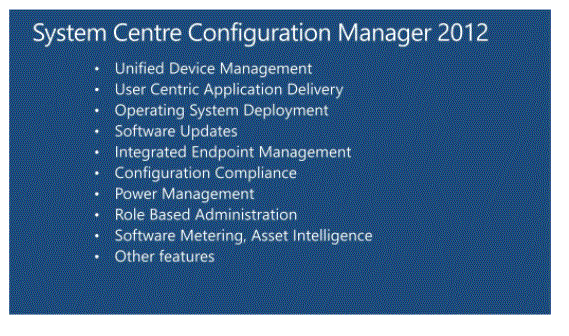
Conclusion
SCCM is the only viable resolution for businesses that may afford it and solely have Windows infrastructure. However, as mixed in operation systems become the norm, SCCM is a smaller amount vital in terms of safety capabilities and potency.
System centre configuration management will solve a spread of business issues, by learning regarding it we will perceive a way to solve issues with the assistance of its own options. It’s also utilised in some cases wherever SCCM finds it helpful.

